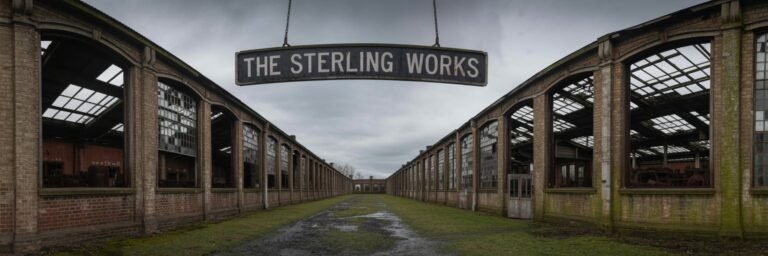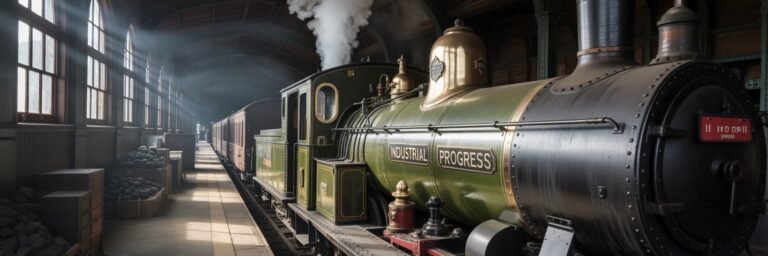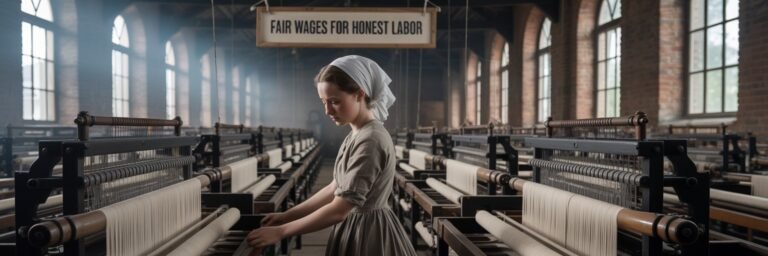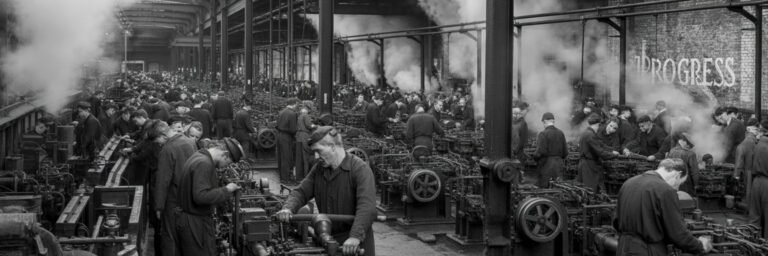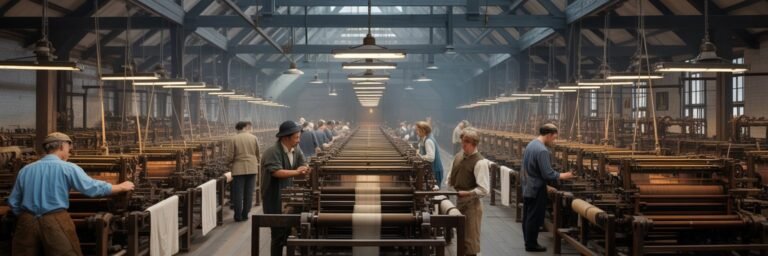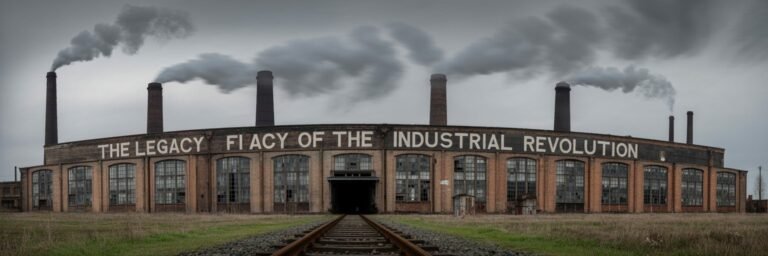INTRODUCTION
A whistle bellows, machinery grinds, and smoke chokes the air. No, this isn’t a science fiction film, but instead, life in the throes of The Industrial Revolution, a period of vast change that birthed our modern world. This mighty shift is commonly understood through its monumental inventions, powerful figures, and economic impact. But beneath these towering narratives, there lay the quieter, unnoticed stories of everyday life. Men, women, and children felt the tremors of industrialization rumble through their homes, their lives, and their minds, revealing a gripping tale of humanity adapting to a new world order.
HISTORICAL BACKGROUND
The Industrial Revolution, roughly marked from 1760 to 1840, was an era that transformed agrarian societies into industrial powerhouses. The process began in Britain, a seemingly unlikely candidate for an industrial juggernaut, given its agrarian past and geopolitical size. However, an amalgamation of controlled trade routes, expanding colonialism, burgeoning financial institutions, and natural resources led Britain to be the genesis of this epochal shift.
THEORIES AND INTERPRETATIONS
Historical consensus converges on the emergence of revolutionary technologies, like the steam engine, spinning jenny, and power loom, as pivotal factors, but a closer inspection reveals a more nuanced story. Historian Joel Mokyr espouses that it was the fusion of economic changes and cultural shifts, with technological progress as its peak, that crafted the Industrial Revolution’s landscape.
Contrastingly, some argue that Britain’s geopolitical advantages, rather than cultural intertwinements, tipped the scales towards industrialization. Historian Robert C. Allen suggested that it was the ‘high-wage economy’ theory, where relative high wages and cheap coal availability made mechanized production more economically viable.
MYSTERIES AND CONTROVERSIES
The larger questions surrounding the Industrial Revolution pertain to the profoundly mixed legacy of its impact on everyday life. Historian E.P. Thompson sparked a major controversy when he rejected the ’embourgeoisement theory,’ which postulated that the Industrial Revolution uncloaked an egalitarian, middle-class society. Instead, Thompson emphasized the polarisation between the ruling class and rising proletariat.
The Factory Act of 1833, for example, paint a controversial image of industrial Britain. On one hand, it regulated work conditions, especially for children, showcasing the government’s cognizance of social welfare. Counterintuitively, however, these laws also exposed the grim realities they were combating: long working hours, health hazards, and child labor—a ubiquitous controversy in this epoch, clouded with volatile opinions and shifting norms, leaving many questions unresolved.
SYMBOLISM AND CULTURAL SIGNIFICANCE
The Industrial Revolution wasn’t just an economic uprising, but a crucible of social changes, moral debates, and ideological shifts symbolized through everyday life. The newfound factory provided not just employment, but also became a crucible for self-expression, solidarity, and class identity. The ‘cloth cap,’ once a symbol of the working-class, transformed into a badge of honor, highlighting the dialectical interplay of class, culture, and capitalism.
Equally potent was the cultural shift towards timekeeping. Before the revolution, people lived by seasons and daylight, but with the advent of clock time, inspired by factory scheduling, a new sense of discipline, punctuality, and economic value of time seeped into the social fabric.
MODERN INVESTIGATIONS
Modern scholarship continues to investigate these untold stories of everyday life in the Industrial Revolution. Emma Griffin’s ‘Liberty’s Dawn’ presented a more optimistic view, citing personal accounts of increased autonomy and social mobility, thus challenging the conventional grim narrative.
Research also dives into the psychological impact of urbanization, examining how densely populated cities and factory conditions affected mental well-being. The famous ‘Engels’ Pause,’ where life expectancy dropped amidst the early industrialization, is now considered evidence of the catastrophic human cost of progress.
LEGACY AND CONCLUSION
While the Industrial Revolution paved the path to our modern world, its legacy resides in the everyday lived experiences. From the length of a child’s working day to the mechanized regimentation of time, the revolution touched every facet of life, engendering disparate and often controversial outcomes across society’s strata.
Indeed, one cannot overlook the exploitation of child labor, the inhuman conditions in factories, or the drastic shortening of people’s life spans. Nonetheless, the era also witnessed working people’s empowerment and resilience, the birth of worker’s rights, and the expansion of opportunities for many sections of society.
As we continue to unpack these everyday histories, it is clear that the Industrial Revolution, in its sprawling complexity and dichotomous impact, wasn’t just an era of great factories and powerful inventions, but also of individual lives irrevocably changed. And herein lies its most fascinating story—a testament to the resilience, adaptability, and creativity of the human experience amidst the undeniable tide of progress.

